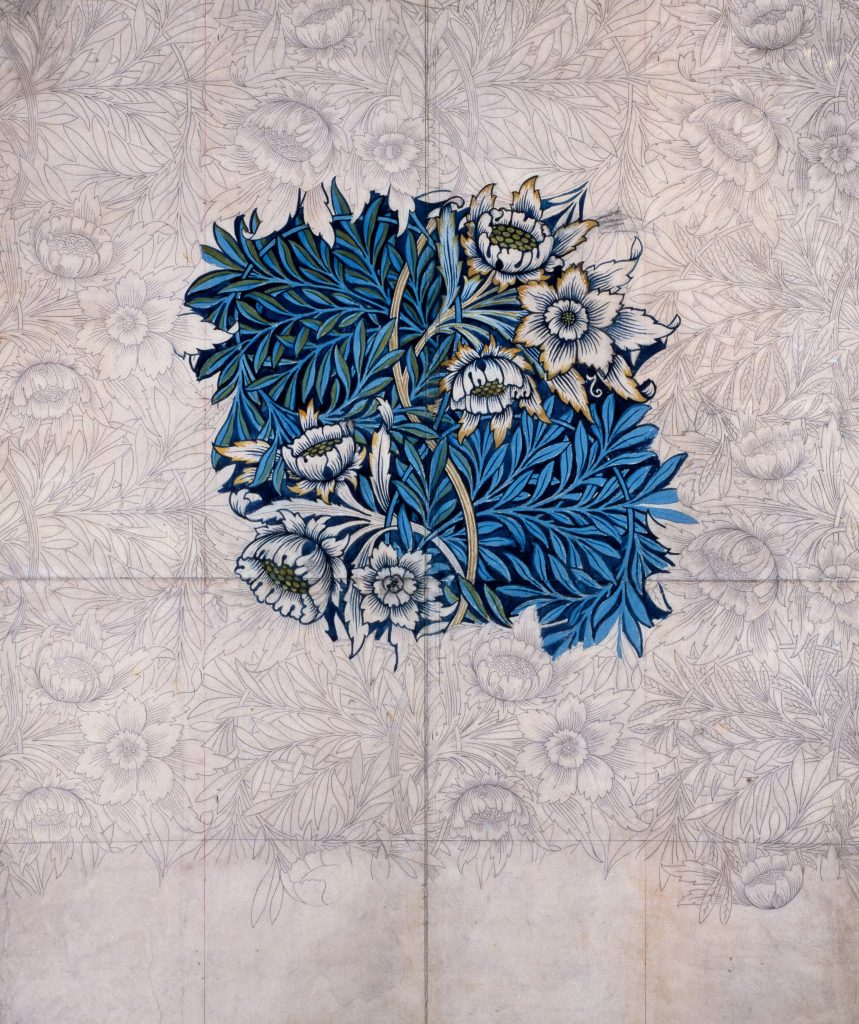Table of Contents
The history of clothes’ fabric design and art is a fascinating journey through time, intertwining culture, technology, and artistic expression. As a medium of both practical use and aesthetic innovation, fabric design has evolved alongside human civilization, reflecting societal changes, economic developments, and technological advancements. This essay explores the evolution of fabric design from ancient times to the present, highlighting key developments and artistic trends.

Photo by Upsplash
Ancient Beginnings: The Roots of Fabric Design
The origins of fabric design can be traced back to prehistoric times when early humans used animal hides and natural fibers to create rudimentary clothing. The first fabrics were likely made from flax, wool, and other plant or animal-based materials, spun into thread and woven into cloth. Evidence from archaeological finds, such as the Neolithic textiles discovered in the ancient village of Çatalhöyük in present-day Turkey, suggests that early fabric production was already a complex process involving weaving, dyeing, and even decorative patterns.
In ancient civilizations like Egypt, Mesopotamia, and the Indus Valley, textile production became an important industry, with fabric design reflecting the cultural and social values of these societies. The Egyptians, for example, developed fine linen, which was often dyed in bright colors and adorned with intricate patterns and symbols. These textiles were not only used for clothing but also for ceremonial purposes and as indicators of social status.
Classical Antiquity: The Flourishing of Textile Arts
In classical antiquity, particularly in ancient Greece and Rome, fabric design reached new heights. The Greeks are known for their use of draped garments, such as the chiton and himation, which were often made from wool and linen and featured intricate weaves and embroidered borders. Greek textile design was influenced by geometric patterns, mythological motifs, and floral designs, reflecting the broader aesthetic values of symmetry and proportion that dominated Greek art.
The Romans, inheritors of Greek culture, expanded the textile arts by incorporating luxury materials like silk, which was imported via the Silk Road from China. Roman fabric design was characterized by opulent patterns, often incorporating gold thread, and was used to convey status and power. Togas, the quintessential Roman garment, were made from fine wool and often featured decorative borders that indicated the wearer’s social rank.
The Medieval Era: A Tapestry of Textiles
The medieval period saw significant developments in fabric design, largely influenced by the spread of Christianity and the growth of trade between Europe, the Middle East, and Asia. The Crusades, in particular, facilitated the exchange of textile techniques and designs across cultures.
In Europe, wool remained the dominant fabric, but silk, introduced from the Byzantine Empire and later from the Islamic world, became increasingly popular among the elite. Medieval textile design was heavily influenced by religious themes, with ecclesiastical garments and altar cloths often featuring intricate embroidery and appliqué work depicting scenes from the Bible. The use of heraldic symbols in fabric design also became widespread during this period, reflecting the feudal structure of society.
One of the most significant innovations of the medieval era was the development of tapestry weaving. Tapestries were used not only as wall hangings but also as a means of insulating cold stone walls in castles and churches. These woven artworks often depicted historical events, religious scenes, or allegorical themes, and they required the collaboration of skilled artists and weavers.
The Renaissance: A Rebirth of Artistic Expression
The Renaissance, with its emphasis on humanism and the revival of classical art, brought about a transformation in fabric design. The period saw a renewed interest in the beauty of the human form, which was reflected in the design of clothing that emphasized natural silhouettes and elegant drapery.
Italian cities like Florence and Venice became centers of textile production, particularly for luxurious silks and velvets. The Renaissance also saw the introduction of complex weaving techniques, such as brocade and damask, which allowed for the creation of richly patterned fabrics. These textiles often featured motifs inspired by classical antiquity, such as acanthus leaves, mythological creatures, and architectural elements.
Embroidery became increasingly sophisticated during this period, with the use of gold and silver thread, pearls, and precious stones to create lavish designs on garments and accessories. The Renaissance also witnessed the rise of printed fabrics, thanks to advancements in textile printing techniques. These fabrics often featured floral designs, influenced by the naturalistic art of the time.
The Industrial Revolution: The Mechanization of Fabric Design
The Industrial Revolution marked a turning point in the history of fabric design, as the introduction of machinery transformed textile production from a manual craft into a mechanized industry. The invention of the spinning jenny, the power loom, and other textile machines led to a dramatic increase in the production of fabrics, making them more affordable and accessible to a broader segment of society.
This period also saw the development of new fabric types, such as cotton, which became the dominant textile material due to its durability and versatility. The use of chemical dyes, developed in the 19th century, revolutionized fabric design by allowing for a greater range of colors and more consistent results. Patterns became more varied and intricate, with designs ranging from simple stripes and checks to elaborate florals and paisleys.
The Arts and Crafts movement, a reaction against the industrialization of fabric production, sought to revive traditional textile arts and emphasized the importance of craftsmanship and quality. Designers like William Morris created textiles that were inspired by nature and medieval art, using hand-printing techniques to produce intricate and colorful patterns.
The 20th Century: A Century of Innovation and Experimentation
The 20th century was a period of immense change in fabric design, driven by technological advancements, cultural shifts, and the rise of fashion as a form of self-expression. The early part of the century saw the continued influence of Art Nouveau, with its flowing lines and organic motifs, and the emergence of Art Deco, characterized by bold geometric patterns and the use of luxurious materials like silk and satin.
The invention of synthetic fibers, such as nylon and polyester, in the mid-20th century, revolutionized fabric design by offering new possibilities for texture, color, and durability. These materials were particularly popular in the post-war period, as they allowed for the mass production of affordable and easy-care clothing.
The 1960s and 1970s were marked by a spirit of experimentation, with designers like Emilio Pucci and Mary Quant using bold, psychedelic prints and unconventional materials to create vibrant and innovative garments. The rise of youth culture and the influence of pop art also had a significant impact on fabric design during this period, with patterns becoming increasingly graphic and abstract.
In the latter part of the 20th century, the fashion industry became more globalized, leading to a fusion of textile traditions from around the world. Designers began to incorporate elements of non-Western textile art, such as African prints, Indian embroidery, and Japanese indigo dyeing, into their collections, creating a rich tapestry of cross-cultural influences.
The 21st Century: Sustainability and Digital Innovation
As we move into the 21st century, fabric design continues to evolve, shaped by new technologies and a growing awareness of sustainability. The development of digital printing has revolutionized fabric design, allowing for greater precision and flexibility in creating patterns. Designers can now create intricate and complex designs using computer software, which can then be printed directly onto fabric with minimal waste.
Sustainability has become a key concern in fabric design, with a growing emphasis on eco-friendly materials, ethical production practices, and recycling. Natural fibers, such as organic cotton, hemp, and bamboo, are increasingly favored for their lower environmental impact. Additionally, there is a renewed interest in traditional textile techniques, such as hand-weaving and natural dyeing, as a way to preserve cultural heritage and promote sustainable practices.
The rise of wearable technology has also opened up new possibilities for fabric design, with the development of smart textiles that can change color, monitor health, or even generate energy. These innovations are pushing the boundaries of what fabric can do, blurring the line between fashion, technology, and art.
Conclusion
The history of clothes’ fabric design and art is a testament to humanity’s creativity, adaptability, and cultural exchange. From the earliest handwoven textiles to the digitally printed fabrics of today, fabric design has continually evolved, reflecting the changing needs and desires of society. As we look to the future, the fusion of traditional techniques with cutting-edge technology promises to open up new horizons in the art of fabric design, ensuring that this ancient craft remains vibrant and relevant in the modern world.


No responses yet